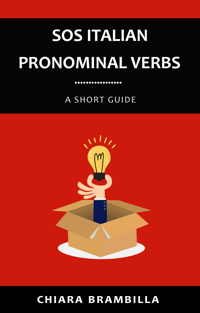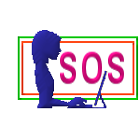
Learning Italian as a second language can be a rewarding experience, but many learners often struggle with building a robust vocabulary. If you’ve ever found yourself stuck using the same few words or struggling to understand conversations, you’re not alone. Fortunately, there are many strategies you can use to expand your Italian vocabulary more quickly. In this post, I’ll explore effective methods to help you learn new words, remember them better, and apply them in real-life conversations.
1. Focus on High-Frequency Words First
The key to expanding your Italian vocabulary efficiently is to start by learning the most commonly used words. Research shows that high-frequency words make up a large portion of everyday conversations, so mastering them will give you the most value for your efforts.
Some basic categories include:
- Greetings: ciao, buongiorno, salve, etc.
- Numbers: uno, due, tre, etc
- Common verbs: essere, avere, fare, etc.
By focusing on these fundamental words, you can start having simple conversations faster, while also building a foundation for more complex vocabulary later on.
Example:
- Ho una macchina. – I have a car.
- Sono stanco. – I am tired.
2. Learn Words in Context
Memorizing word lists is useful, but learning words in context will help you retain them longer and understand how to use them properly. Instead of just learning isolated words, try to study phrases, sentences, or even short dialogues. This will help you see how words fit together and improve your overall fluency.
For instance, if you’re learning the word mangiare (to eat), also learn how it’s used in different contexts:
- Mangio una pizza. – I’m eating a pizza.
- Vuoi mangiare qualcosa? – Do you want to eat something?
By using words in real sentences, you’ll remember them more easily and be able to apply them more naturally.
3. Use Flashcards and Spaced Repetition
Flashcards are a time-tested tool for vocabulary building, and when combined with spaced repetition systems (SRS), they become even more powerful. SRS is a technique that presents information at increasing intervals over time, helping you reinforce your memory just before you’re likely to forget a word.
Popular apps like Anki and Memrise allow you to create digital flashcards and automatically schedule reviews for optimal retention. As you learn Italian vocabulary, create cards with both the Italian word and a sentence to reinforce context. For example:
- Flashcard front: Fare
- Flashcard back: To do/make
- Esempio: Faccio una torta. – I’m making a cake.
This combination of word and context ensures that you remember both the meaning and how to use it.
4. Immerse Yourself in Italian Media
Immersion is one of the fastest ways to expand your Italian vocabulary. The more you expose yourself to Italian, the more naturally you’ll pick up new words and phrases. Start by incorporating Italian-language media into your daily routine.
Here are some examples of what you can do:
- Watch Italian TV shows and movies: Try popular movies like La vita è bella (Life is Beautiful). Use subtitles in your native language first and then in Italian to match spoken words to written ones.
- Listen to Italian music or podcasts: Songs by artists like Eros Ramazzotti or podcasts such as Coffee Break Italian are perfect for learning new vocabulary while enjoying the content.
- Read books, newspapers, or blogs: Start with simple books, like cooking books, and work your way up to more complex materials. Reading exposes you to different forms of vocabulary and phrases.
For example, while reading a cooking book or watching an Italian cooking show, you might learn new words related to food:
- Tagliare – To cut
- Cuocere – To cook
- Mescolare – To mix
Example sentence:
- Mescolate la salsa prima di servirla. – Stir the sauce before serving it.
5. Practice Speaking with Native Speakers
One of the best ways to expand your vocabulary is by engaging in conversations with native Italian speakers.
Whether through language exchange platforms like Tandem, an online Italian teacher or in person, speaking with others forces you to learn and use new words to express yourself.
When you don’t know a word, native speakers often provide alternatives or suggest better ways to phrase things. This dynamic interaction is invaluable for learning new vocabulary and improving your fluency.
6. Label Everyday Objects
A fun and practical way to expand your vocabulary is by labeling common objects around your home. Every time you see the object, you’ll reinforce the word in your mind. Use sticky notes to label things like:
- Il frigorifero – The refrigerator
- La porta – The door
- La sedia – The chair
You can also add useful sentences to each label:
- Il frigorifero è vuoto. – The refrigerator is empty.
- Apri la porta. – Open the door.
This technique is especially effective for visual learners and helps incorporate vocabulary into your daily life.
7. Group Words by Theme
Another effective way to expand your Italian vocabulary quickly is by learning words in thematic groups. This approach helps you associate related words, making them easier to remember. Here are some common themes:
Food:
- Il pane – Bread
- Il formaggio – Cheese
- La pasta – Pasta
Travel:
- L’aeroporto – The airport
- Il biglietto – The ticket
- La mappa – The map
By focusing on a specific theme, you’ll build a useful vocabulary set for certain situations. For example, if you’re planning a trip to Italy, learning travel-related words will be especially useful.
Example:
- Dov’è l’aeroporto? – Where is the airport?
- Ho perso la mia mappa. – I lost my map.
In short, expanding your Italian vocabulary doesn’t have to be a slow or overwhelming process. By using techniques like learning words in context, practicing with native speakers, and immersing yourself in Italian media, you can significantly accelerate your progress.
Remember, the key to learning new vocabulary is consistency and exposure. Dedicate time each day to using these strategies, and in no time, you’ll notice your Italian vocabulary growing stronger and more diverse. So, start today and watch how quickly you can expand your ability to express yourself in Italian!
If you found this article useful, don’t forget to share it with the world and to like our Facebook Page!
Credits
Image by Copilot





 Is It Possible to Learn Italian in Three Months?
Is It Possible to Learn Italian in Three Months?
